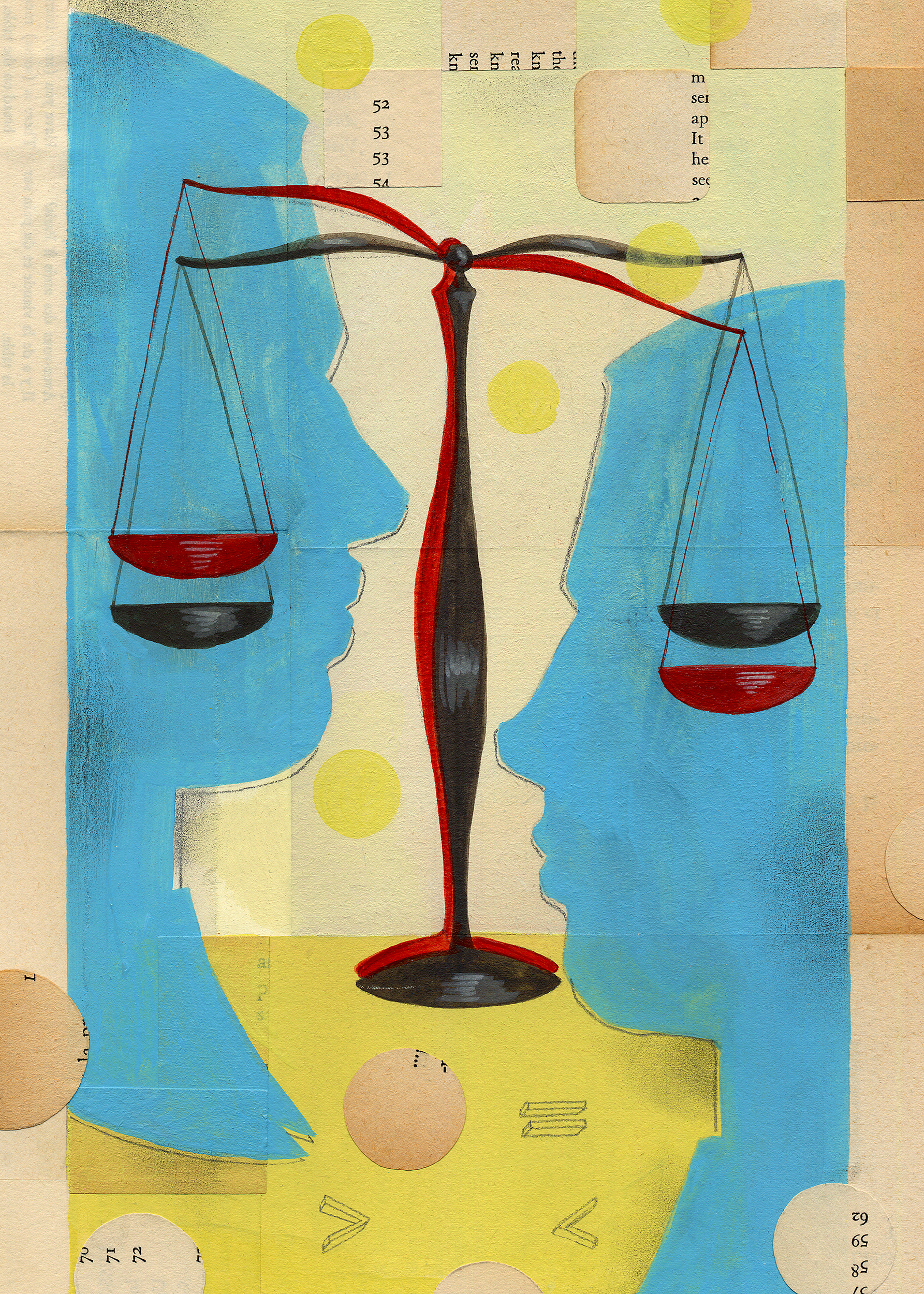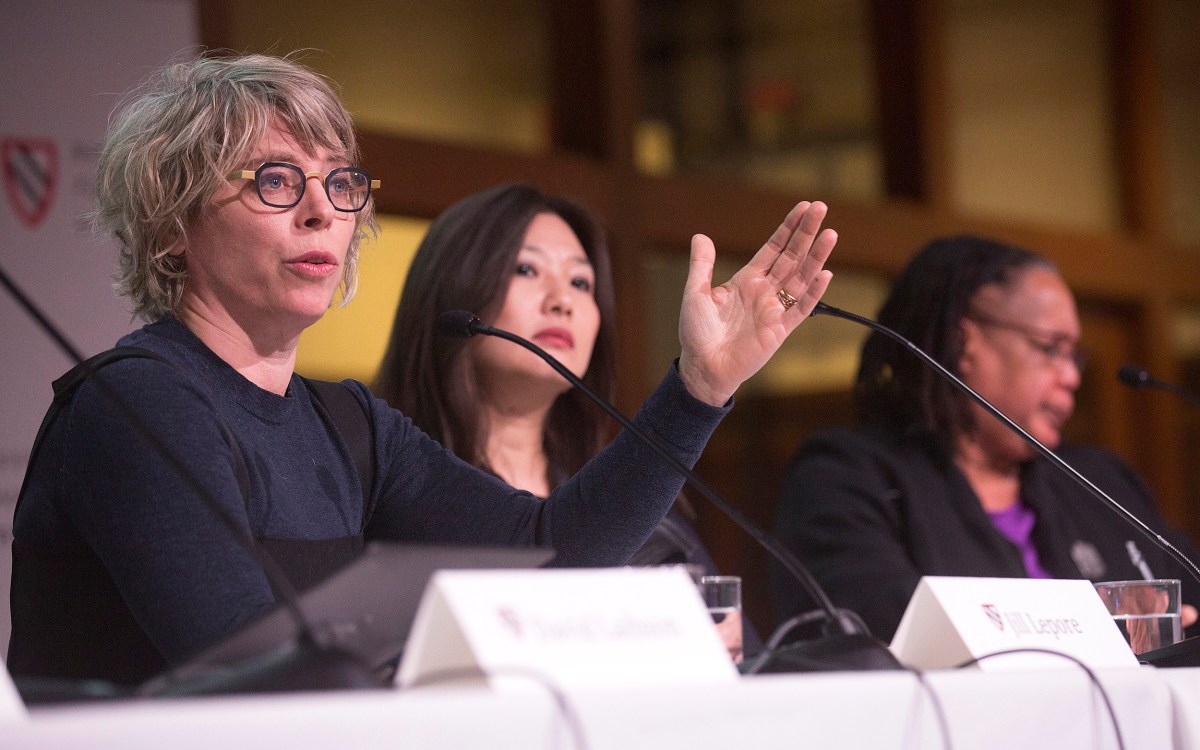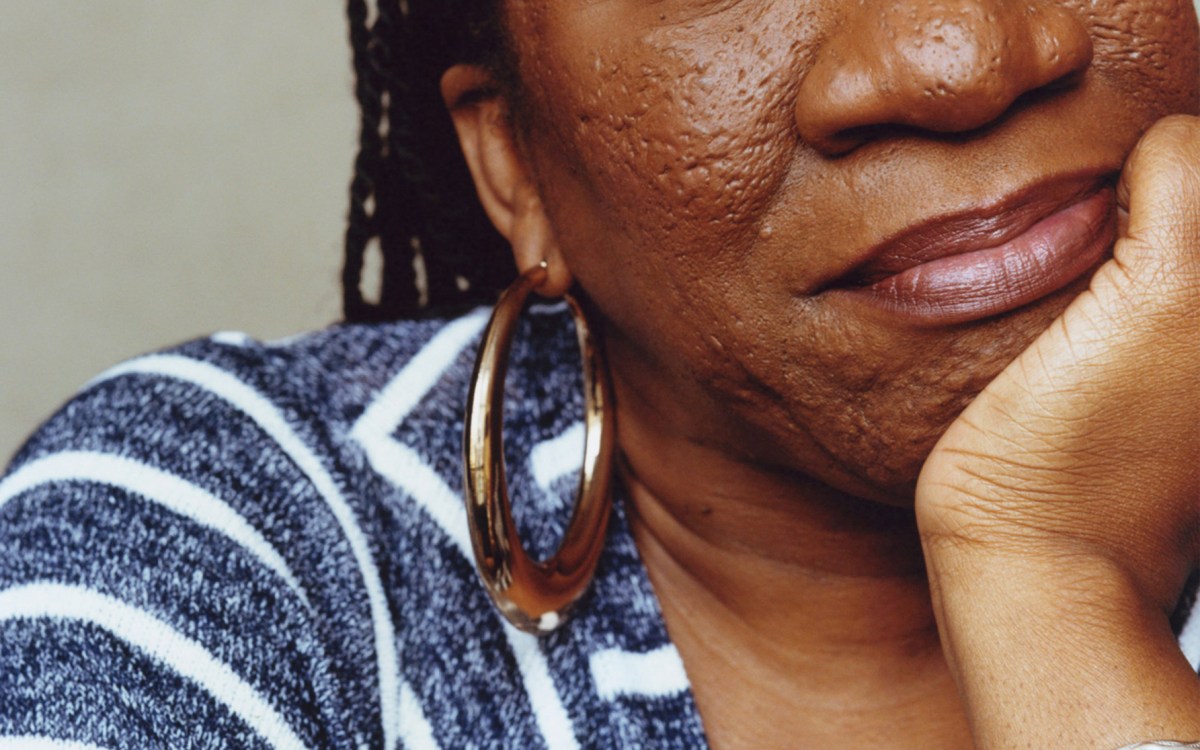How rape culture shapes whether a survivor is believed
Survivors’ and suspects’ gender and familiarity can inform respondent bias, study says

Illustration by Leigh Wells
A hallmark of the #MeToo movement has been to make plain the ubiquity of sexual violence against women and the impunity with which some perpetrators get away with it again and again. Rape is the nation’s most underreported violent crime, according to U.S. Justice Department statistics, as survivors fear that juries will believe the perpetrators, not them, and if they pursue justice, they may suffer further physical, economic, or social harm.
This stacked deck, known as “rape culture,” is the set of social attitudes about sexual assault that leads to survivors being treated with skepticism and even hostility, while perpetrators are shown empathy and imbued with credibility not conferred on people accused of other serious crimes, like armed robbery.
New research from the Harvard Kennedy School’s Dara Kay Cohen, Ford Foundation Associate Professor of Public Policy, Matthew Baum, Marvin Kalb Professor of Global Communications, and Susanne Schwarz, M.P.P. ’15, finds that rape culture bias is not only real, but it shapes how people determine what a believable rape case looks like, who is most likely a rape victim, and in which circumstances rape is less likely to take place.
In a series of experiments, respondents were given certain details about rape cases, like the survivors and perpetrators’ race, a survivor’s sex and sexual history, a perpetrator’s socioeconomic status and relationship to the survivor, where the crime took place, and what clothing the victim wore — all details known to have the potential to trigger four key elements of rape bias: victim blaming, empathizing with perpetrators, assuming the victim’s consent, and questioning the victim’s credibility. The respondents were asked to determine which cases should be reported to police and how severely perpetrators should be punished, and briefly explain why, according to a paper published in Political Behavior.
The details provided were not legally relevant and therefore should not have factored in people’s evaluations, “but they do,” said Schwarz, the paper’s lead author and a doctoral student in political science at Princeton University. “People use them to discriminate between and differentiate between the cases.”
Schwarz began working on the issue of rape culture with Baum and Cohen while a graduate student at HKS, and the recent research follows on prior work by the two professors. In 2018 Baum and Cohen (with co-author Yuri Zhukov, Ph.D. ’14, of the University of Michigan) published what is believed to be the first large-scale quantitative analysis of rape culture bias in the U.S. media, and its consequences.
Cohen and Baum were stunned by national news coverage of high school football players in Steubenville, Ohio, who in 2013 were convicted of raping a 16-year-old girl. Many of the accounts appeared to favor the perpetrators, so they decided to examine how common such bias was in news stories about sexual assault.
After developing a 72-point framework with which to measure bias, they evaluated all newspaper stories about rape in the Lexis Nexis database published between 2000 and 2013 using machine-learning data analysis. They found a correlation between the level of rape bias in a community’s news coverage and the incidents of rape reported and prosecuted there, according to the resulting paper, coauthored with Zhukov.
Correlation is not causation, of course, so the researchers next wanted to know how the public’s perceptions of rape generally influenced their views of specific rape cases.
“What started out as this attempt to capture how systematic biases against rape survivors in the media are … then morphed into the question of: How does this type of coverage affect how people evaluate these cases?” said Schwarz.
In the new study, the researchers found that some types of victims were believed less often than others, and some scenarios were seen as less credible. Details related to consent, such as the victim’s sexual history and prior relationship with the perpetrator, and to victim blaming, such as their sex or the venue of the rape, most influenced whether people would report a case to police and how harshly respondents believed the rapist should be punished.
Cases involving male survivors were “significantly less believed” than female ones, while the race of survivors and perpetrators was not influential in the way some might expect, although respondents were 4.7 percentage points likelier to believe Black female survivors than white female victims. Despite the controversy surrounding the initially lenient punishment of Brock Turner, a white Stanford University swimmer convicted of sexual assault and attempted rape of an unconscious woman behind a dumpster outside a fraternity in 2015, a perpetrator’s socioeconomic status was not a factor for respondents. But where the rape took place was influential, with people, by 6 percentage points, less likely to report rapes that happened at a party and 17.6 percentage points less likely to seek harsh punishment. If the victim and perpetrator knew one another prior to the rape, the case was 11.8 percentage points less likely to be referred to police.
Some respondents were asked about factors in the context of armed robbery to test whether such attitudes were crime-related or rape-specific.
The researchers were surprised that respondents so willingly offered their rationales for deciding whether to report a case or how to punish perpetrators. While respondents often attributed it to analysis of the facts presented, “it is also driven by these false beliefs that people hold about what a rape victim looks like, what a believable rape incident looks like, and under what circumstances rape happens and does not happen,” said Schwarz.
The findings indicate that testing the effect that rape-culture bias has on police officers, attorneys, and judges would be an important but very challenging area to pursue in future research.
“One of my hopes for the implications of this research is just to make people aware that there is an undercurrent of bias about how seriously we take these crimes and how much we believe [rape] to be deserving of punishment or how much we kind of blame the victim for putting himself or herself into the situation that resulted in the attack,” Cohen said.









